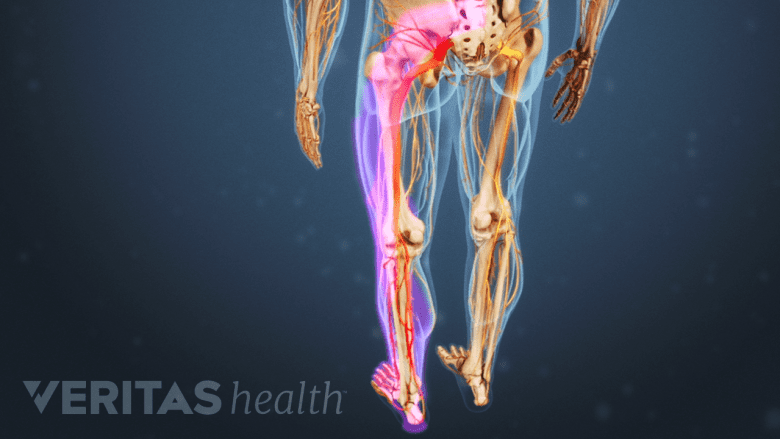Surgery for sacroiliitis is rare and mainly indicated to manage instability of the sacroiliac (SI) joint. Surgical treatment may be considered in select cases when non-surgical methods have been exhausted and the patient's quality of life is significantly impacted.
Patients should carefully review and discuss the potential risks, benefits, and surgical alternatives of SI joint surgery with the physician.
Surgery for Sacroiliitis: Indications

Surgery may be recommended for chronic symptoms of severe pain, stiffness, and limited mobility.
SI joint surgery may be recommended in the following cases:
- Chronic pain that is not relieved by non-surgical treatments for at least 6 months1Lorio M, Kube R, Araghi A. International Society for the Advancement of Spine Surgery Policy 2020 Update—Minimally Invasive Surgical Sacroiliac Joint Fusion (for Chronic Sacroiliac Joint Pain): Coverage Indications, Limitations, and Medical Necessity. International Journal of Spine Surgery. 2020; 14(6):860-895. http://doi.org/10.14444/7156
- Limited function and mobility that significantly impacts daily activities and the patient’s quality of life
- Severe sacroiliac joint damage that causes persistent or severe pain, stiffness, and limited mobility2Fenton DS. Chapter 63 – Sacroiliitis. In: Czervionke LF, Fenton DS, eds. Imaging painful spine disorders. 1st ed. Saunders; 2011:476-481. https://doi.org/10.1016/B978-1-4160-2904-5.00063-X
Surgery may sometimes be necessary due to an acute injury or medical emergency caused by a fall or car accident.
Physicians who perform sacroiliitis surgery
Sacroiliitis surgery is typically performed by an orthopedic surgeon or neurosurgeon specializing in spinal surgeries. These specialists have extensive training and experience in performing surgeries on the spine and the surrounding areas, including the SI joint.
In This Article:
SI Joint Fusion Surgery for Sacroiliitis

In rare cases, SI joint fusion surgery may be required to better stabilize the SI joint.
SI joint fusion surgery is a minimally invasive surgical treatment for sacroiliitis that is performed under general anesthesia.
- The procedure involves removal of the damaged cartilage from the sacroiliac joint surfaces and fusing the two bones.
- The fusion can be done using bone grafts or metal implants.
- Fusion surgery aims to eliminate the movement in the sacroiliac joint.
SI joint fusion surgery typically has a high success rate, with most patients experiencing significant pain relief and improvement in function.3Baronio M, Sadia H, Paolacci S, et al. Etiopathogenesis of sacroiliitis: implication fo r assessment and management. Korean J Pain. 2022;33(4):294-304. http://doi.org/10.3344/kjp.2020.33.4.294,4Sachs D, Capobianco R. Minimally invasive sacroiliac joint fusion: one-year outcomes in 40 patients. Adv Orthop. 2013;2013:536128. http://doi.org/10.1155/2013/536128
Read more about How Sacroiliac Joint Fusion is Performed
Recovery after SI joint fusion surgery
A hospital stay of 1 to 2 nights may be needed following joint fusion surgery; however, the recovery time may vary depending on the patient's overall health. Typically, SI joint fusion takes about 12 weeks for the bones to fuse, but patients continue to heal for up to a year after surgery.1Lorio M, Kube R, Araghi A. International Society for the Advancement of Spine Surgery Policy 2020 Update—Minimally Invasive Surgical Sacroiliac Joint Fusion (for Chronic Sacroiliac Joint Pain): Coverage Indications, Limitations, and Medical Necessity. International Journal of Spine Surgery. 2020; 14(6):860-895. http://doi.org/10.14444/7156
Recovery from SI joint fusion involves a combination of pain medications, physical therapy, and lifestyle modifications to help improve healing. A pelvic brace may be prescribed to stabilize the pelvis and limit painful movements during the initial 12-week period.1Lorio M, Kube R, Araghi A. International Society for the Advancement of Spine Surgery Policy 2020 Update—Minimally Invasive Surgical Sacroiliac Joint Fusion (for Chronic Sacroiliac Joint Pain): Coverage Indications, Limitations, and Medical Necessity. International Journal of Spine Surgery. 2020; 14(6):860-895. http://doi.org/10.14444/7156
Read more about Sacroiliac Joint Fusion Recovery
Spinal Cord Stimulator Impact Surgery for Sacroiliitis

Spinal cord stimulation may provide relief by interfering with pain signals.
Spinal cord stimulation (SCS), also called neurostimulation, is a minimally invasive surgical treatment that helps provide pain relief through the modulation of the nervous system. SCS for sacroiliitis involves surgically implanting a pulse generator device and wired electrodes under the skin in the upper buttock below the hip bone.
The pulse generator generates controlled frequencies of electric current that pass through the electrodes to interfere with pain signals reaching the brain.5Polsunas PJ, Sowa G, Fritz JM, Gentili A, Morone NE, Raja SN, et al. Deconstructing chronic low back pain in the older adult-step by step evidence and expert-based recommendation for evaluation and treatment: part X: sacroiliac joint syndrome. Pain Med. 2016;17:1638-47. http://doi.org/10.1093/pm/pnw151,6Chakrabortty S, Jumar S, Gupta D, Rudraraju S. Intractable sacroiliac joint pain treated with peripheral nerve field stimulation. J Anaethesiol Clin Pharmacol. 2016;32:392-4. http://doi.org/10.4103/0970-9185.173336
Recovery after spinal cord stimulation
A spinal cord stimulator implant surgery is an outpatient procedure, and most patients return home the same day after the treatment.7Dydyk AM, Tadi P. Spinal Cord Stimulator Implant. [Updated 2022 Jul 4]. In: StatPearls [Internet]. Treasure Island (FL): StatPearls Publishing; 2022 Jan-. Available from: https://www.ncbi.nlm.nih.gov/books/NBK555994/ The average time to resume driving a motor vehicle is about 2 to 3 weeks after the surgery, but may take about 6 weeks to recover and return to an office or sedentary job.8Simopoulos TT, Rosa H, Wootton J, Eichman DS, Gill JS. A survey of spinal cord stimulator use by chronic pain patients while driving. Neuromodulation: Technology at the Neural Interface. 2016;19(5):487-491. http://doi.org/10.1111/ner.12367
- 1 Lorio M, Kube R, Araghi A. International Society for the Advancement of Spine Surgery Policy 2020 Update—Minimally Invasive Surgical Sacroiliac Joint Fusion (for Chronic Sacroiliac Joint Pain): Coverage Indications, Limitations, and Medical Necessity. International Journal of Spine Surgery. 2020; 14(6):860-895. http://doi.org/10.14444/7156
- 2 Fenton DS. Chapter 63 – Sacroiliitis. In: Czervionke LF, Fenton DS, eds. Imaging painful spine disorders. 1st ed. Saunders; 2011:476-481. https://doi.org/10.1016/B978-1-4160-2904-5.00063-X
- 3 Baronio M, Sadia H, Paolacci S, et al. Etiopathogenesis of sacroiliitis: implication fo r assessment and management. Korean J Pain. 2022;33(4):294-304. http://doi.org/10.3344/kjp.2020.33.4.294
- 4 Sachs D, Capobianco R. Minimally invasive sacroiliac joint fusion: one-year outcomes in 40 patients. Adv Orthop. 2013;2013:536128. http://doi.org/10.1155/2013/536128
- 5 Polsunas PJ, Sowa G, Fritz JM, Gentili A, Morone NE, Raja SN, et al. Deconstructing chronic low back pain in the older adult-step by step evidence and expert-based recommendation for evaluation and treatment: part X: sacroiliac joint syndrome. Pain Med. 2016;17:1638-47. http://doi.org/10.1093/pm/pnw151
- 6 Chakrabortty S, Jumar S, Gupta D, Rudraraju S. Intractable sacroiliac joint pain treated with peripheral nerve field stimulation. J Anaethesiol Clin Pharmacol. 2016;32:392-4. http://doi.org/10.4103/0970-9185.173336
- 7 Dydyk AM, Tadi P. Spinal Cord Stimulator Implant. [Updated 2022 Jul 4]. In: StatPearls [Internet]. Treasure Island (FL): StatPearls Publishing; 2022 Jan-. Available from: https://www.ncbi.nlm.nih.gov/books/NBK555994/
- 8 Simopoulos TT, Rosa H, Wootton J, Eichman DS, Gill JS. A survey of spinal cord stimulator use by chronic pain patients while driving. Neuromodulation: Technology at the Neural Interface. 2016;19(5):487-491. http://doi.org/10.1111/ner.12367

